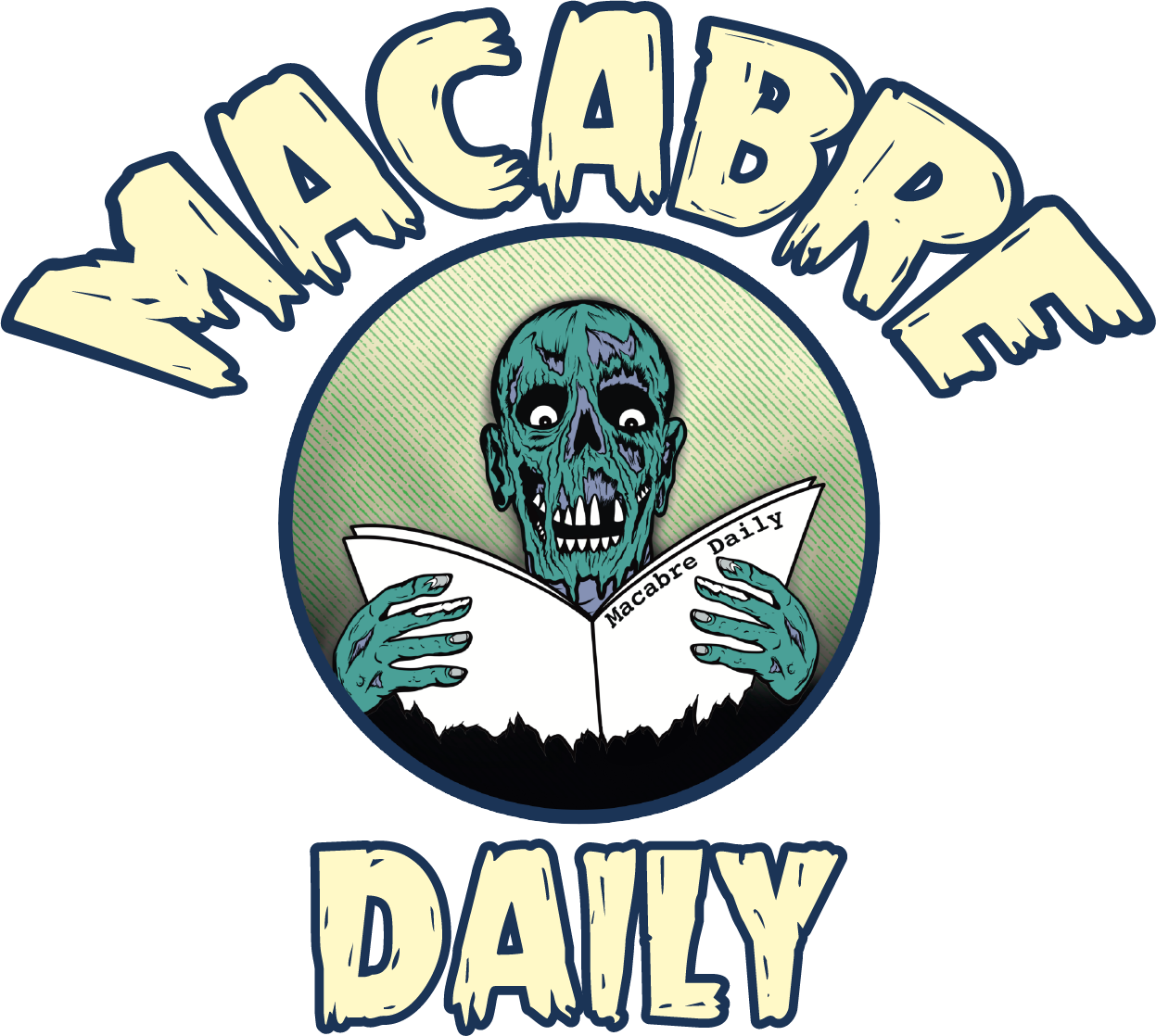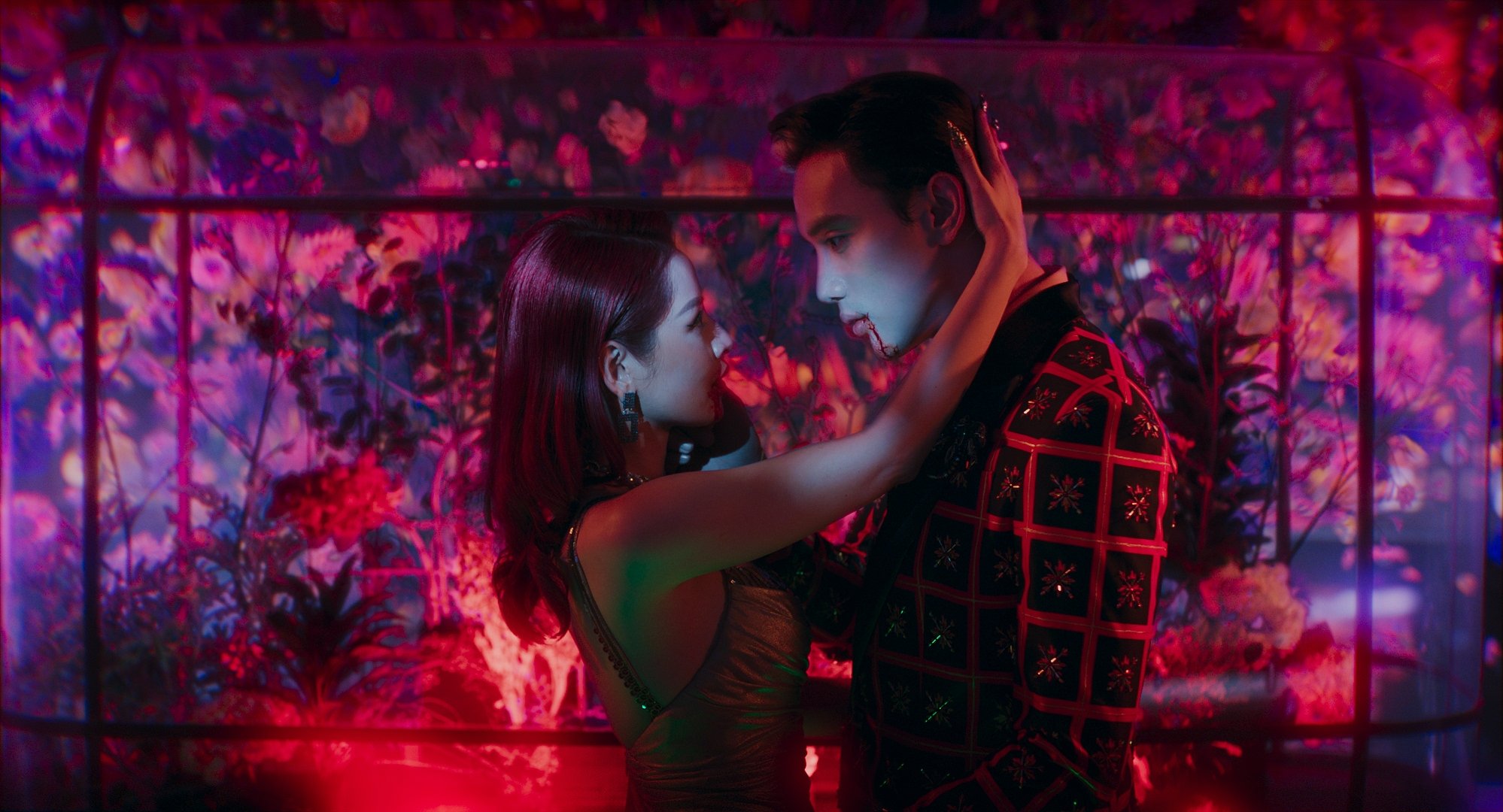Director E. L. Katz Talks About The Scary Silence Of "AZRAEL" (2024) with Macabre Daily (INTERVIEW)
Director E.L. Katz has been working in the genre space for a while now, having directed the cult classic “Cheap Thrills” and the underrated “Small Crimes” (not “Small TOWN Crime,” as I sometimes have to point out). He’s made a name for himself in TV and streaming, helming episodes of “Channel Zero,” and “Scream: The Series.” He also helmed an episode of “The Haunting of Bly Manor,” which dared to include Sheryl Crow’s “I Shall Believe” (the second most overused song on TV since “Hallelujah”) to tug at our heartstrings, and pulled it off nicely. So where does he go from here? The answer is his latest film “Azrael,” a post-apocalyptic action horror film about a society that has taken a vow of silence after the Rapture.
It’s a tall order, but with the help of star Samara Weaving, screenwriter Simon Barrett (“You’re Next,” to name a few), and a cast and crew who were game to shoot in the Estonian wilderness, you have a unique and thrilling new movie. Katz sat down to talk about combining worldbuilding with ambiguity, and his love of survival horror.
Lowell Greenblatt: I’m a fan of good films with low budgets and big swings, and I think “Azrael” fits that pretty well. Aside from the usual pre-production tasks, how did you prepare to make a silent action horror film in the woods?
E.L. Katz: Thank you. It was a real challenge. The one good thing we had with prep was time. My friends and I have worked on films where they just cut time and say “figure it out.” As soon as we found out there was a chance the movie was going to happen, I basically almost flew myself out to Estonia.The first issue was production logistics in the woods. How do you get the grip trucks in there? How do you get the lights above the trees? How do you get the look that you want? There was a lot of initial scouting that took place, then I went out there. A lot of Estonia IS the forest, so it's a big footprint.
The high holy days hit different this year
We lucked out because our cinematographer Mart Taniel, who did the great Estonia film “November,” has lived there his whole life. He had some familiarity with certain areas and he found this patch of woods that you could almost consider a soundstage. There were roads that weaved in and out, but it was still really vast and atmospheric. We had the ability to build there, and there were enough clearings that we could move the camera and equipment through there. It was a rare find. At the same time, there’s a shitload of worldbuilding we had to jump into as soon as possible.
LG: That was my next question.
EK: Luckily we had a great production designer, Carlos Laszlo, who was down to take that adventure with me. We had a huge production book to make. You had to figure out the village. What do the [villagers] eat? How do they communicate when there’s an intruder? Nobody’s talking, but what is the ritual and what does it sound like? You want something expressive and loud, but without vocal chords. Some stuff you get to do in sound design, and we were lucky to have a really long process with the really talented Matis Rei. Every day was defining this world that [Azrael] was going to be running through, while doing stunts and practical effects. It was a monster, so you just have to get there as early as possible and don’t stop until you run out of time.
LG: The setting is incredible. Did you have Estonia in mind as a shooting location or was it a discovery?
EK: In a weird way, I always had Estonia in mind. One of the only festivals that my second film played was an Estonian film festival. It was that and SXSW. I went out there and it was interesting. The woods feel haunted. It’s a nature-specific culture. Some people say they’re still kind of pagan in a contemporary way. They’re so dialed into nature, and there are these old Soviet structures littered around the woods. It stuck with me, and I remember hearing that if you put your money there, it would go pretty far. I had a friend who shot a movie there called “Deliver Us,” that didn’t cost much money, but they got a lot of production value out of it.
When Simon [Barrett] shared the script with me, I was like “this is a crazy movie, that’s probably going to be hard [to shoot]. You should take it to Estonia.” It’s built for it. You don’t have to pretend you’re in Cleveland or shoot in Toronto. We talked to some production companies, because it was a bit of a ticking clock. Like, we had to shoot before winter came and froze everything [Laughs]. This was before everything really slowed down in Hollywood. Prague was busy, Ireland was expensive, but Estonia was viable.
LG: There were elements of the film I didn’t quite understand, but aside from it being a “me problem,” would you say that’s by design? How do you decide how much to tell the audience and how much to infer themselves?
EK: [Laughs] It’s kind of a little bit of reckless abandon. I’ve had to make a lot of things where everybody spends time explaining what’s going on. I was drawn to the experience. I didn’t really think of what I wanted the audience to understand. In the big picture, I wanted them to feel things through Azrael’s experience. Outside all the weird, interesting mythology, I think it’s a revenge story. When we meet [Azrael], they seem pretty kind, then they go through the process of becoming someone else. I was really drawn to that. It felt like visual storytelling. Everyone, to some degree, can follow Azrael, even if they can’t follow every single thing that happens in the world, and I love that.
The way I think of it, my dad used to have a used bookstore. I remember digging into a crate of old graphic novels, some of which were from other countries from the 70s or 80s. I remember not always understanding everything, but I was captivated. I was turning her page and enjoying the mystery, but also the accessibility of the genre elements. It’s a fun, unique opportunity to get to make it, as well as to watch it.
LG: “Azrael” has a mix of survival horror and folk horror that I don’t think is combined that often.
EK: I love folk horror, but I LOVE survival horror. I think I got to [survival horror] first from slashers. I’ve watched every single slasher, but the areas that I gravitated to the most were survival [horror]. From the more prestigious John Boorman-y survival to “Rituals” and “Just Before Dawn.” Anything that had people having to swing on ropes, or get trapped by freaky killers in the woods. I just love that stuff so much. Trying to instill this biblical folk horror thing with earthy survival horror was a big goal.
Samara Weaving as Azrael, wondering what’s out there.
LG: I just want to go back to ambiguity one last time. There’s a vein of it that runs through “Azrael” and some of your other films like “Cheap Thrills” and “Small Crimes.” Is it something you’re particularly drawn to?
EK: It’s interesting. I’m definitely drawn to it when I see it in horror. It inspires my imagination in terms of being disturbed or intrigued. Sometimes it’s a challenge to engage with the audience with it. It’s a bit of a risk, but I think instantly, it’s part of the genre. Whether it’s noir or horror, a big part of it is that there are things we can’t make sense of, that we don’t get. That’s what unnerves us. It’s definitely celebrated in the noir I grew up on. I also love the cosmic horror of Thomas Ligotti and the noir of Jim Thompson. Where are people coming from and where’s the universe coming from? To me, that’s the big question of human experience. We don’t walk around truly understanding the insane shit that happens to our planet or us seems to go down, so why should that be so neatly tied up in our art? Not everyone wants to go on those rides [Laughs], but I’m personally drawn to it, yes.
Interview edited for length and clarity. “Azrael” is currently playing in select theaters and arrives on Shudder this month.
Stay up to date with “The Dark Side Of Pop Culture” by following Macabre Daily on Instagram, Facebook, and Twitter.














